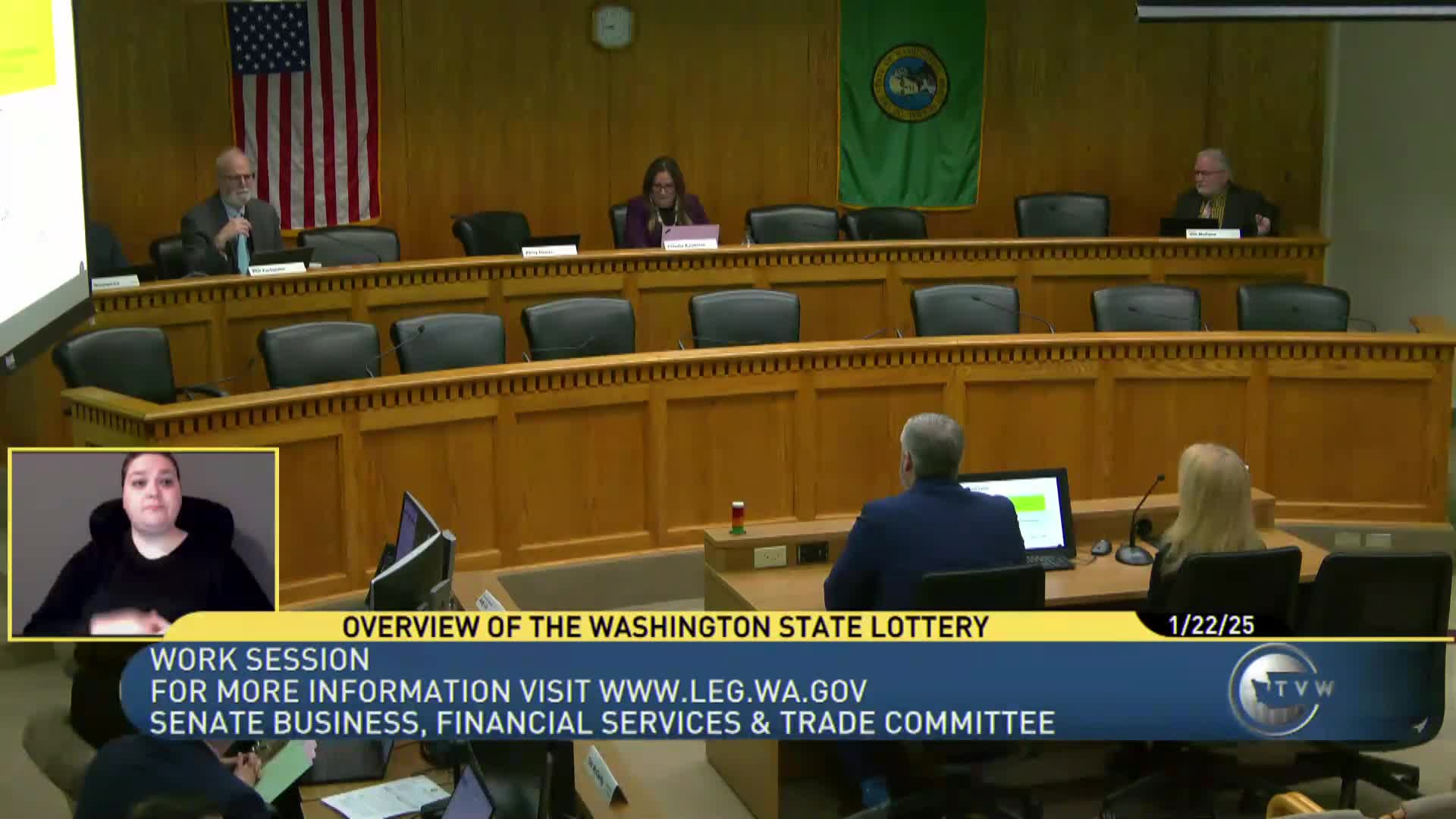Lottery sales surge as jackpots climb to record highs, experts reveal player behavior trends
January 22, 2025 | Business, Financial Services, Gaming & Trade, Senate, Legislative Sessions, Washington
This article was created by AI summarizing key points discussed. AI makes mistakes, so for full details and context, please refer to the video of the full meeting. Please report any errors so we can fix them. Report an error »

In a recent meeting of the Senate Business, Financial Services & Trade Committee, discussions turned to the dynamics of lottery ticket sales and the impact of jackpot sizes on consumer behavior. The atmosphere was charged with curiosity as committee members sought to understand the correlation between lottery winnings and ticket purchases.
One senator raised a pivotal question about the sales patterns associated with different jackpot amounts. "How many people are buying tickets when the lottery starts at $1,000,000?" he inquired, emphasizing a common sentiment among potential players who often hesitate to participate unless the prize reaches a more enticing figure, such as $10,000,000. The response highlighted a notable trend: as jackpots grow, so does public interest, leading to a significant uptick in ticket sales.
The committee learned that while a $1,000,000 prize may not attract as many players, larger jackpots, particularly those in the tens or hundreds of millions, draw considerable attention and participation. For instance, the Powerball and Mega Millions lotteries currently begin at $20,000,000, which, after taxes, translates to a substantial annual income for winners. This financial incentive is a key driver behind the increased sales during high-stakes periods.
The discussion also touched on the visibility of lottery sales during peak times, such as the holiday season, where long lines at vending machines were observed as jackpots soared to $1,000,000,000. This surge in interest underscores the public's desire for life-changing sums of money, reinforcing the idea that larger prizes not only capture media attention but also significantly boost ticket sales.
Additionally, a clarification was made regarding the distribution of lottery profits. The committee emphasized that while they stated 100% of profits return to the government, this refers specifically to state governments, highlighting the importance of understanding where these funds ultimately go.
As the meeting concluded, it was clear that the interplay between jackpot sizes and ticket sales is a critical aspect of lottery operations, influencing both consumer behavior and state revenue. The insights gained from this discussion may shape future policies and marketing strategies aimed at maximizing participation in state lotteries.
One senator raised a pivotal question about the sales patterns associated with different jackpot amounts. "How many people are buying tickets when the lottery starts at $1,000,000?" he inquired, emphasizing a common sentiment among potential players who often hesitate to participate unless the prize reaches a more enticing figure, such as $10,000,000. The response highlighted a notable trend: as jackpots grow, so does public interest, leading to a significant uptick in ticket sales.
The committee learned that while a $1,000,000 prize may not attract as many players, larger jackpots, particularly those in the tens or hundreds of millions, draw considerable attention and participation. For instance, the Powerball and Mega Millions lotteries currently begin at $20,000,000, which, after taxes, translates to a substantial annual income for winners. This financial incentive is a key driver behind the increased sales during high-stakes periods.
The discussion also touched on the visibility of lottery sales during peak times, such as the holiday season, where long lines at vending machines were observed as jackpots soared to $1,000,000,000. This surge in interest underscores the public's desire for life-changing sums of money, reinforcing the idea that larger prizes not only capture media attention but also significantly boost ticket sales.
Additionally, a clarification was made regarding the distribution of lottery profits. The committee emphasized that while they stated 100% of profits return to the government, this refers specifically to state governments, highlighting the importance of understanding where these funds ultimately go.
As the meeting concluded, it was clear that the interplay between jackpot sizes and ticket sales is a critical aspect of lottery operations, influencing both consumer behavior and state revenue. The insights gained from this discussion may shape future policies and marketing strategies aimed at maximizing participation in state lotteries.
View full meeting
This article is based on a recent meeting—watch the full video and explore the complete transcript for deeper insights into the discussion.
View full meeting
